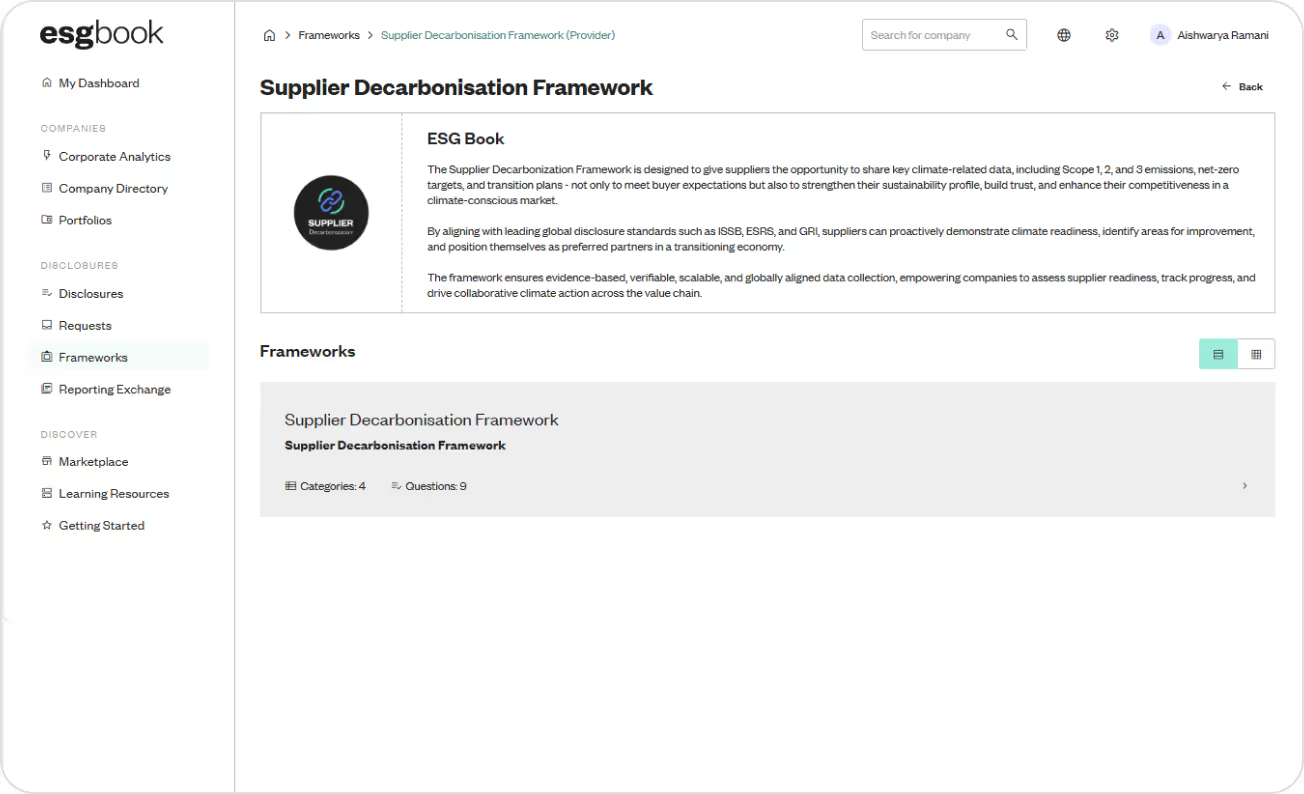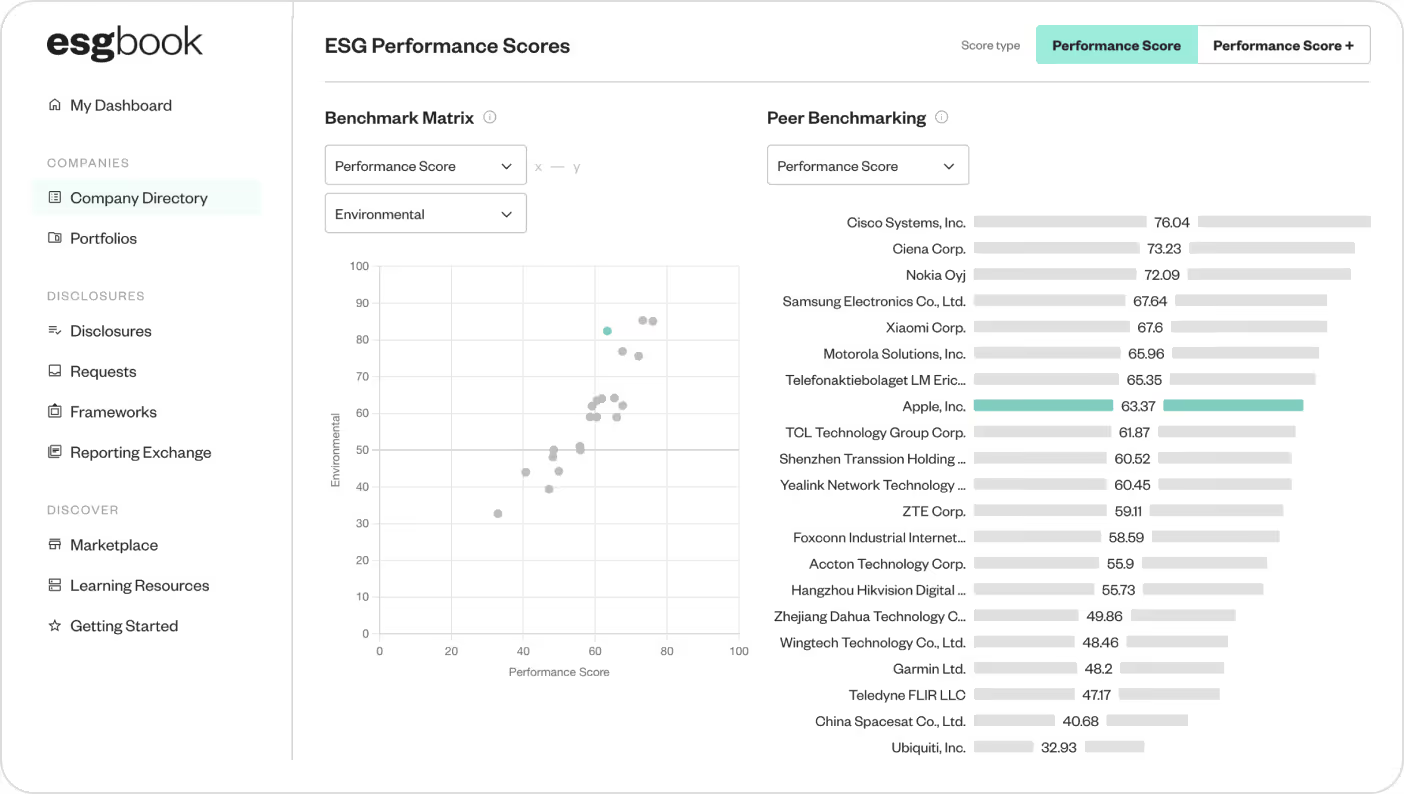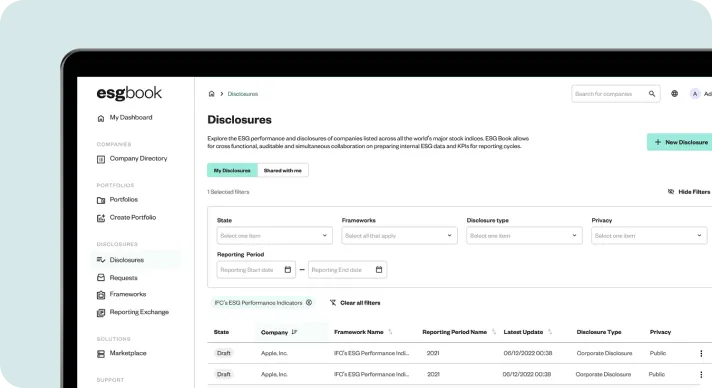Engage your suppliers to report on your Scope 1, 2, and 3 emissions
Global businesses use ESG Book to replace spend-based estimates with validated supplier data for Scope 1, 2, and 3 emissions, streamline emissions collection, and identify and manage high-emitting suppliers.



.avif)
.avif)
.avif)
The Challenge
Complex questionnaires, low response rates, and difficult supplier engagement add friction, while siloed spreadsheets, emails, and tools make validation harder, leading to gaps, errors, and delays in Scope 1, 2, and 3 reporting.
ESG Book helps global businesses replace spend-based estimates with validated supplier data for Scope 1, 2, and 3 emissions, streamline emissions collection, and identify and manage high-emitting suppliers.
Access public supplier data
Use public supplier emissions data to inform supplier selection and support CSRD reporting. Access baseline emissions and other public sustainability data for 76,000 companies, including 500+ metrics on 10,000 companies, covering hard-to-abate sectors, EU Taxonomy alignment, and Scope 1–3 estimates. The dataset is updated daily and available through a single integration.
.png)
Scale private supplier data
Send requests to all your suppliers at once and trigger follow-up reminders. Questionnaires can be customised by supplier size, and a simple interface drives higher response rates than legacy systems.
Use AI to prefill disclosures with public supplier data and past submissions. Suppliers can confirm submissions directly, and performance is monitored over time, simplifying the reporting process
.avif)
Automate supply data validation
Build trust with real-time checks that flag errors and outliers. Use automated validation and spot reviews to catch inconsistencies, with source documentation for every data point. Units are standardised across temperature, distance, and currency to reduce manual work and improve data quality.
.avif)
Track supplier progress
Public data is updated daily, and private supplier data is refreshed as new information is added, so you track supplier progress and identify missed commitments.
Data can be integrated into your internal systems via API, Snowflake, AWS, GCP, SFTP, and can also be accessed via CSV or through the ESG Book web platform.

Streamline your supply chain emissions reporting with ESG Book
“Cloud and AI are at the heart of ESG book and help to make reporting easier and more efficient, allowing companies to focus on delivering performance."

